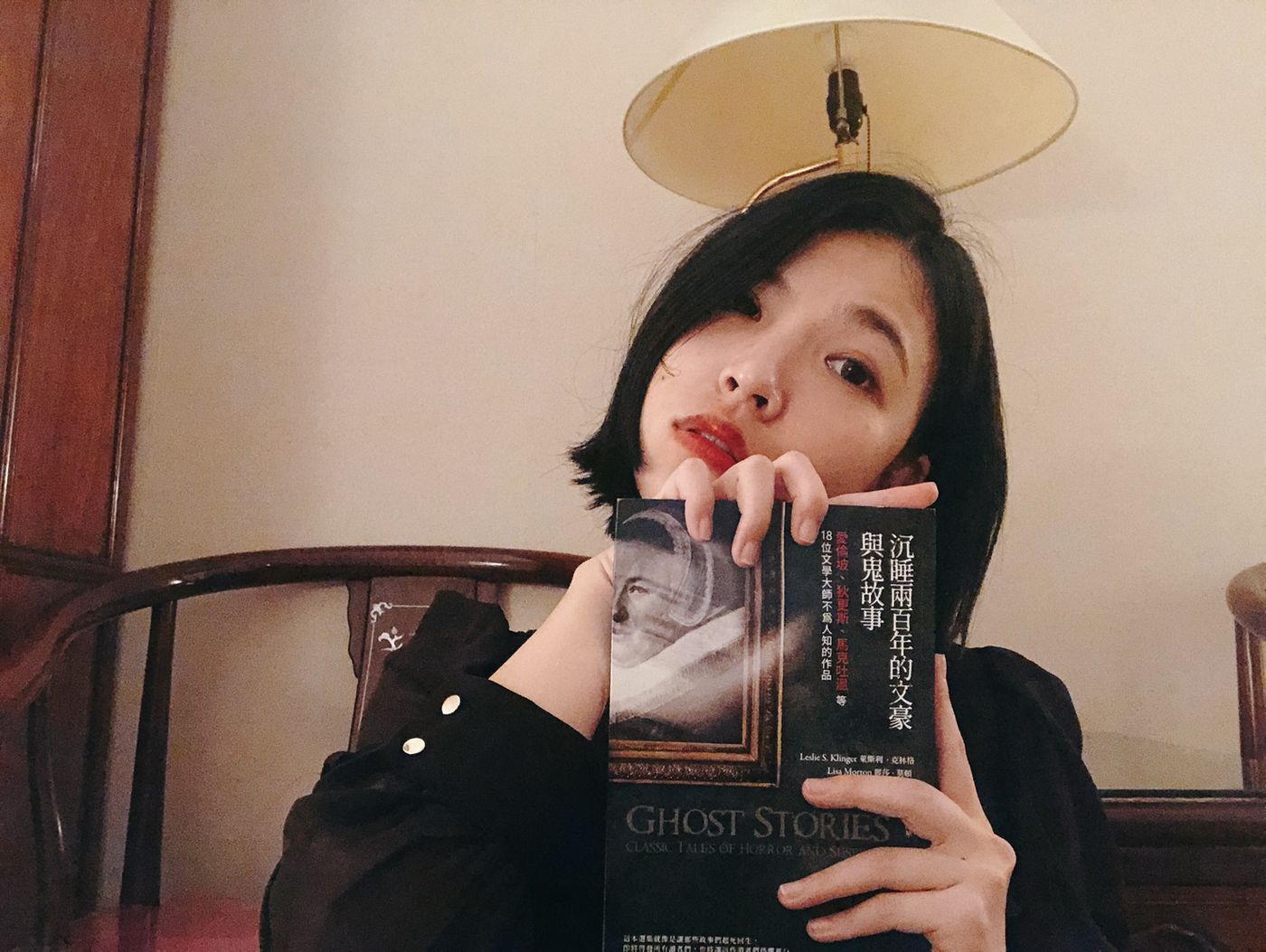"Literary Masters and Ghost Stories Who Slumbered for Two Hundred Years" - Have you read ghost stories by literary masters such as Edgar Allan Poe, Dickens, and Mark Twain?
The Western ghost stories told in " The Literary Man and the Ghost Story That Slumbered for Two Hundred Years " are a very special reading experience, because generally speaking, when talking about horror stories, the first thing that comes to mind are often Western horror movies, such as Evil Dead. Linggu Castle was my childhood shadow. I will always remember the moment at the beginning of the movie when a monster soaked in potion suddenly opened its eyes. That was my first contact with an atmosphere of terror. In those days, my teenage self didn’t even dare to go to the toilet alone.
Now that I think about it, apart from finding it funny after learning more about the story, I also feel that the ghosts in the West appear a bit abruptly, unlike Chinese ghosts, where there are texts that can cultivate cultural awareness, such as " "Strange Stories from a Chinese Studio" was treated like a cultural white mouse and was dissected and analyzed by Chinese language teachers in junior high schools.
I still remember that the reading experience at that time was particularly profound. The more than 500 stories in Liaozhai vividly demonstrated the boundaries of spiritual life at that time, such as why a person does not feel at ease after doing bad things behind people's back. Are there gods? Why do people burn paper money or even paper cars, cell phones, and villas when they go to visit graves? Are there really "ghosts" who will receive them? Why when it comes to vixens, men always have an attitude of refusing to welcome them, etc.

Through exaggerated words, these habits we have taken for granted are pulled off the surface of a peaceful life. Every culture has its own archetypal stories, and the sum of the personalities formed by many archetypal stories is the collective unconscious of a culture. Therefore, the experience and discovery brought by this book are particularly interesting. On the one hand, Western cultural heritage is an unfamiliar symbol to us, but for us, this is a good thing in reading, because if we are not familiar with it, we can better discover the story behind it. sense of dissonance .
On the other hand, for intellectuals, the shortcut to a deep understanding of human nature and the world is to read more classic literature. Otherwise , it will take a lot of time to just rely on your own experience to understand the ways of the world. "Ghost Stories " collects the works of Edgar Allan Poe, Dickens, Mark Twain and other masters, and can also be used as a cultural introductory brick.
Having said so much, I hope that the content of this article can bring more fun to reading this book, not just thinking about the ideological nature of the story and criticism of real society, but also thinking about it from a larger perspective. Behind the story, how is terror formed and spread, and what fixed social and cultural laws does this process follow?

The Origin and Development of Western Ghost Stories
The story is true; I knew the family whose beautiful daughter was killed by a fatal painting: and I had seen that painting; as the lady said, that painting carried with it a feeling that penetrated the heart beyond words. I couldn’t look directly at it for too long because of the kindness described in it; but as you said, it looked full of gentle sadness, as if the eyes could move, as if they were alive.
Before the earliest times in the West, ghost stories were just a form of performance attached to drama, and they existed in people's lives very early. From the records in the Hebrew Scriptures (Old Testament) of the Bible, the God of Israel Jehovah told the Israelites that people should not worship ghosts. It can be seen that many countries in ancient Asia worshiped ghosts, and spiritism was also very common.
However, as a cultural connotation, ghost stories did not really flourish until the emergence of spiritualism in the 19th century. At that time, there were millions of spiritualist believers in the United States and the British Isles. They believed that it was human intuition that directly controlled the phenomena of consciousness and life. Intuition could control everything in reality. Through intuition, people could instinctively and directly control everything. to enter the depths of spiritual consciousness and communicate with the souls of the deceased.
Especially after the disastrous American Civil War from 1861 to 1865, many parents, spouses, and siblings suffered the loss of their loved ones. The desire to communicate with souls in another world made spiritualism even more popular. "Natural" The Dark Side" Crowway wrote:
The contemptuous skepticism of a previous era is being replaced by a more humble spirit of inquiry. Among the most enlightened people today, a large number of people have begun to believe that in fact, those stories that are called prophecies and should not be accepted are truths that few people understand.
Coupled with the development of printing, spiritualism became the cultural basis of ghost stories of that period. This culture mainly revolved around two themes: the first is that the real horror is the villain who is a mortal; the second is that humans cannot master the universe. The concept of all things is the source of fear. However, not all ghost stories at the end of the 19th century were influenced by spiritualism. The trend of studying folklore has also become increasingly popular. For example, ghost stories used to be one of the traditional entertainment programs at Christmas, rather than being part of the traditional Christmas entertainment program as they are now. Halloween, and slowly the development of Western ghost stories became what we see now.

Cultural Differences in Zombies
Let’s talk about the differences between China and the West, let’s take a symbol that is common to both sides, the zombie. Zombies in Chinese cultural legends usually refer to corpses that can move . Zombies are different from ghosts: Chinese civilization has a saying of "three souls and seven souls". It is believed that the soul belongs to Yang and represents "good", while the soul belongs to Yin and represents "evil". "If the ascetic can control the seven souls with three souls, his body will be immortal.
It can be understood that the soul represents the human spirit. The soul that leaves the body is a ghost, and ghosts still have human emotions and thoughts; however, if the soul on the corpse does not disperse with the soul, or is invaded by external evil spirits, the corpse will When it starts to move, the soul is a carrier of stupidity, evil, and no thoughts , so the zombies cannot communicate and only know how to harm people.
On the other side, in the United States, the earliest zombie movie " White Zombie " was filmed in 1932. The setting at that time was that zombies were created by African voodoo spells . These corpses had no thoughts, could understand simple commands, and could serve as slaves and soldiers. use. By the 1960s, zombie movies began to become popular. At this time, the characters of zombies were caused by nuclear leaks or virus infections. Zombies would attack people, were not afraid of guns and knives, and people would turn into zombies if they were bitten by zombies. At this time, The zombies look like the Castle of Evil.

The era and group fear represented by zombies
The previous article talked about the superficial differences between the formation of zombies in China and the United States. Next, we will discuss the common cultural psychology of human beings behind zombie stories. Such stories with a high level of horror are all manifestations of contemporary and collective fear.
The contemporary and collective fear is reflected in the fact that people today cannot imagine the horror of battlefield killings . A real war does not immediately lead to a fierce life-and-death fight, but a long wait, endless anxiety and fear . After war, soldiers often suffer from psychological problems such as hallucinations and stress reactions. People who are untrained, unarmed, and helpless are more likely to fall into collective panic.
For example, the Seven Uprisings broke out in Pu Songling's hometown. He was only eight or nine years old at the time. The horrific rumors were not only his childhood nightmare, but also the local collective panic, but we have long forgotten it at this moment. There is a story called " Wild Dogs " in "Strange Stories from a Chinese Studio". The name "Wild Dogs" refers to the wild dogs that roam in groups on the battlefield and eat corpses. These animals are the survivors of the turmoil who have suffered mental breakdown. The image was misunderstood and exaggerated. It spread throughout the place as quickly as possible through word of mouth, which also intensified the horror of the war.

So what are Americans afraid of when zombie movies are so popular?
As the world's policeman and global hegemon, what does the United States fear? Putting this question in the context of popular culture, we may be able to sort out some answers. The theme of zombie movies began to be accepted by the public in the 1960s. This period was preceded by the late World War II, but it was the trough of horror movies, because Americans had just Having gone through the war, I no longer want unnecessary tension.
But in the 1960s, the United States experienced the Cuban Missile Crisis , faced the imminent nuclear threat, and caused the bloody and devastated case of Japan. If diplomatic negotiations fail, nuclear weapons may actually hit the United States mainland. This has caused the largest collective fear in American history. Regardless of whether it is useful or not, many Americans have begun to build nuclear bomb-proof fortifications in their own backyards.
Amid concerns that the world would become a wasteland after nuclear war and that irradiated mutant creatures would run rampant, movies about "nuclear radiation turns people into zombies" became popular, and people vented their worries about the future through movies. So whether it was the Yu Qi Uprising or the Cuban Missile Crisis, tracing the origin of the zombie story tells us a very important thing, how much peace is worth cherishing and maintaining . War not only brings death and disaster, but also distorts people's spirits for a long time and leaves a traumatic mark on the times.

Knowledge can resolve most fears
No soul can understand the pounding of my heart that I felt when Alan sat within touching distance. I could barely resist the desire to make him feel my presence, if only for a moment. Then I looked at myself and realized—oh, the absurd, pathetic human fear! If I approach him without warning, it may make him wary. Not so long ago I myself had those blind and ignorant feelings of timidity. So I moved closer to him, but I didn't touch him. I just leaned toward him and said his name in the softest voice. I really couldn't resist the urge; the spell of life still held me tightly.
There is a mysterious little book about demons, " Solomon's Little Key ", which records many spells and methods of summoning demons. It talks about the great King Solomon of Israel in the Bible, who was also an excellent demon summoner. He and the demon king Ba Li made a contract at the cost of his soul after death in exchange for the ability to seal and enslave the 72 demons in hell. These 72 demon kings are called the 72 Pillars of Solomon. After Solomon died, the Babylonians invaded. They saw the bottles that sealed the demons and thought they were treasures, so they opened the bottles, and these great demons were released into the world.
This story shows that even the devil has a complete set of doctrines , which is also very meaningful to the spread of Christianity. By setting up an opponent, followers can unite and have a goal to eliminate, and then describe hell and punishment as terrifying and terrifying. Specifically, it can also stimulate more fanatical piety (as many political nerds know this well). For thousands of years, all religious activities that the church considers anti-Christian have been classified as worshiping Satan. This includes scientists, astronomers and other people who pursue the truth in history. It is now difficult to clarify how much of this is involved. There are false accusations and rumors.
But if you change the perspective and look at its own behavioral logic from the devil's perspective , there will be a sense of absurd confusion:
The protagonist (the devil) is resurrected, and then it communicates with believers in the human world. The followers gather together to discuss business strategies, who is responsible for operations, business promotion, administrative execution, etc. Although there may still be bloody actions to suppress dissidents in the process, this scene does not look like a horror movie, but like a documentary. The audience may also feel sympathy and silently hope that the "devil" can succeed. Some people may say that this is moral depravity, but this is because the stance and perspective will affect emotions. Changing the devil in the above paragraph to a hero or an angel seems to be able to turn it into a standard commercial hero film.
The truth is that what scares us is the survival instinct to escape after being scared. However, if we have time to analyze what the unknown thing is while ensuring safety, what can it do to ourselves? Sometimes, you can find that it is completely fictional, or just a deformed reality , or it is just a difficulty that can be overcome.
Like my work? Don't forget to support and clap, let me know that you are with me on the road of creation. Keep this enthusiasm together!

- Author
- More